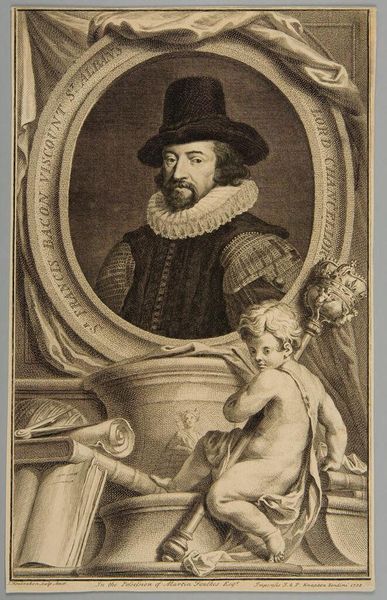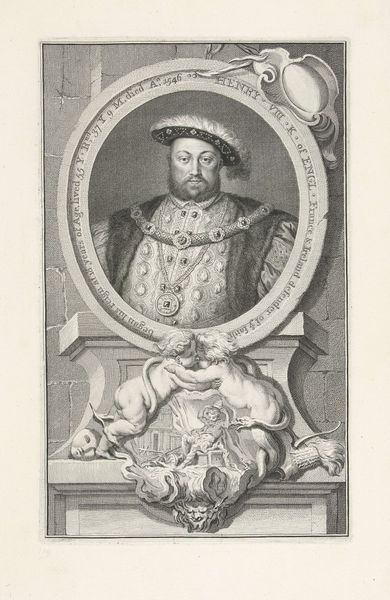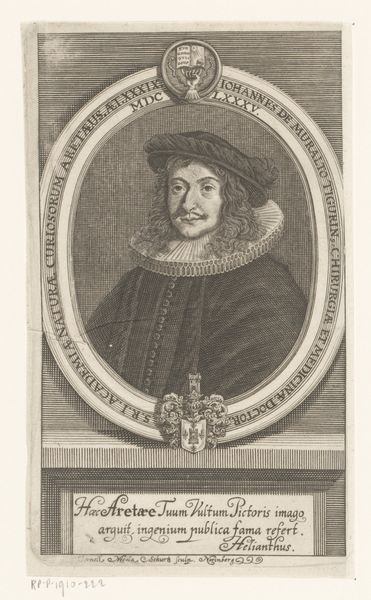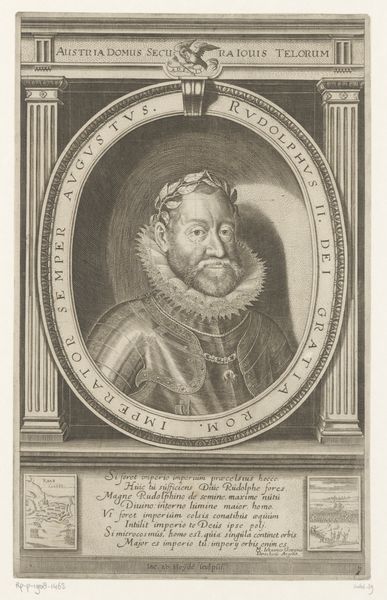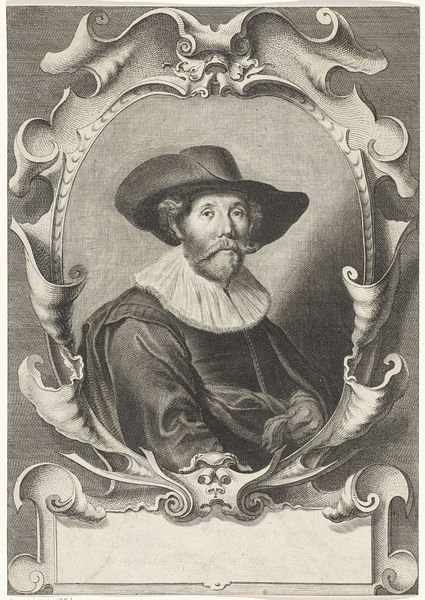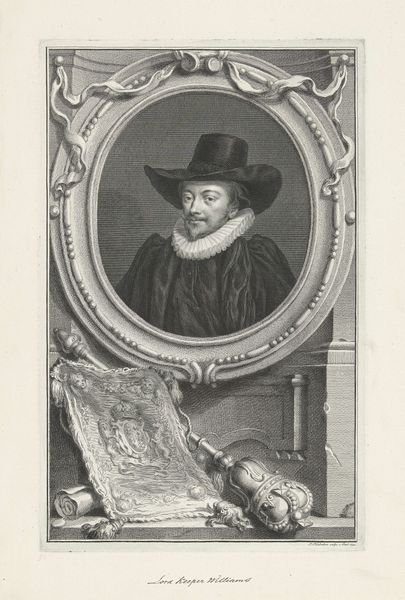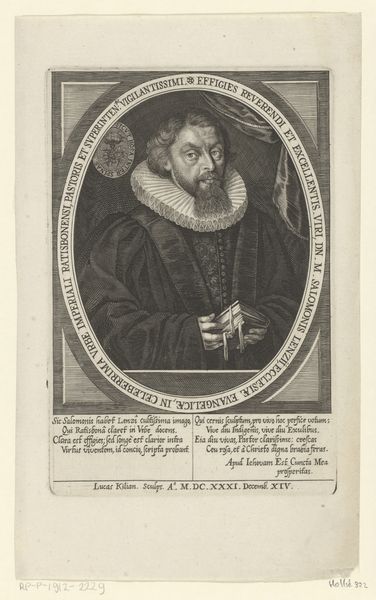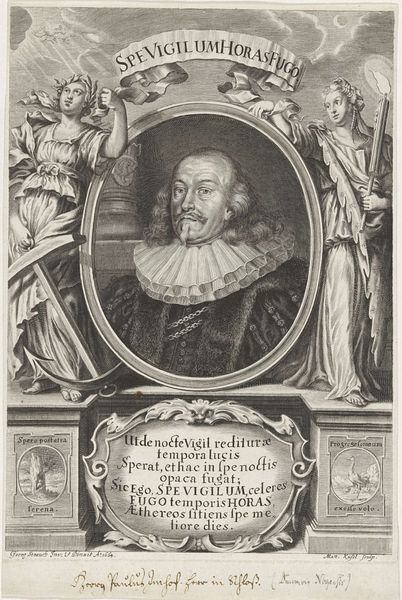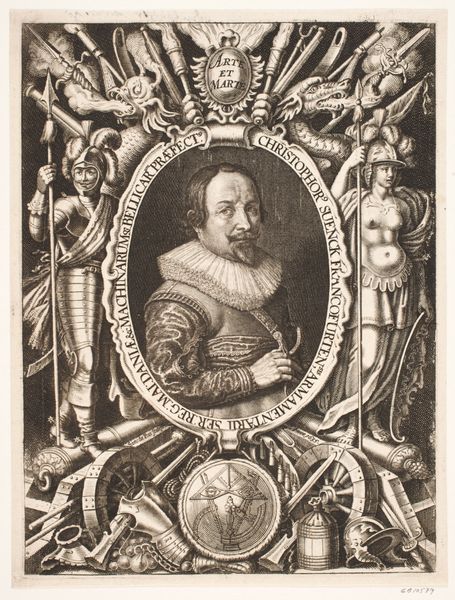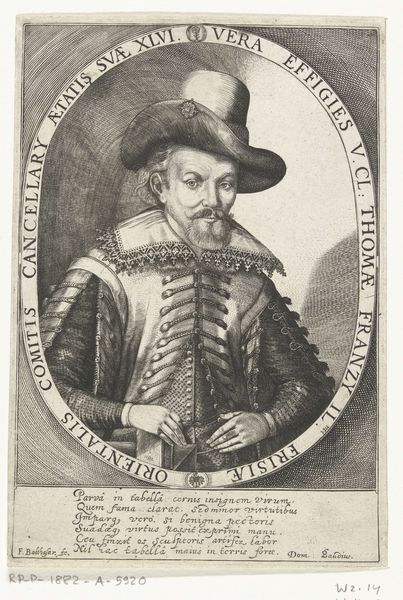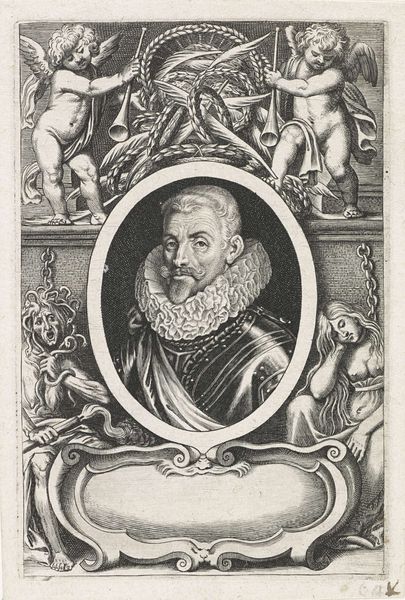
print, engraving
#
portrait
#
baroque
# print
#
portrait drawing
#
engraving
Dimensions: height 365 mm, width 231 mm
Copyright: Rijks Museum: Open Domain
Editor: It feels so still, doesn't it? That fine hatching gives everything a weight, a sort of deliberate quiet. Curator: Indeed. What we have here is "Portret van Francis Bacon", an engraving made sometime between 1736 and 1738. The engraver was Jacob Houbraken, and you can find it here at the Rijksmuseum. Editor: An engraving! It's all lines, carefully planned and laid down. Look how those lines define the ruff around his neck. So many tiny cuts into the metal, so much work for such ephemeral material. The original plate would have been copper I imagine, fairly precious in and of itself... Curator: The texture certainly adds a certain weightiness. But it also makes me think about presentation—the whole is arranged with such drama, Bacon in his oval frame, a chubby cupid down below, a crown glinting, seemingly supported by documents, ready to fall into the abyss. It makes you wonder, who was this man? Editor: Bacon, right? Logic dictates, by that fancy mace and getup that this is a portrait of Francis Bacon from way back. Its worth thinking about how his legacy of empirical philosophy shaped craft and scientific exploration—particularly when there's an inherent skill in replication, something that mechanical art practices share. It kind of feels a testament to those ties... Curator: True enough. This portrayal hints at that intellectual strength. He feels, somehow, very present. The details invite that: the curl of his hair, that steady gaze...I wonder what he would have made of the fact that he, the father of the scientific method, is himself replicated over and over through print? What would his view be on material transformations from an ideal to a copy. Editor: Hah! Quite so! Well, either way, thinking about what Houbraken's labour has given us does provide us some insight, no? By carefully looking and attending to material, you gain all sort of interesting discoveries. Curator: I agree; this whole dance between materiality and being – as well as the emotional response to those, I think can continue to unfold for viewers today as it did centuries ago.
Comments
No comments
Be the first to comment and join the conversation on the ultimate creative platform.
